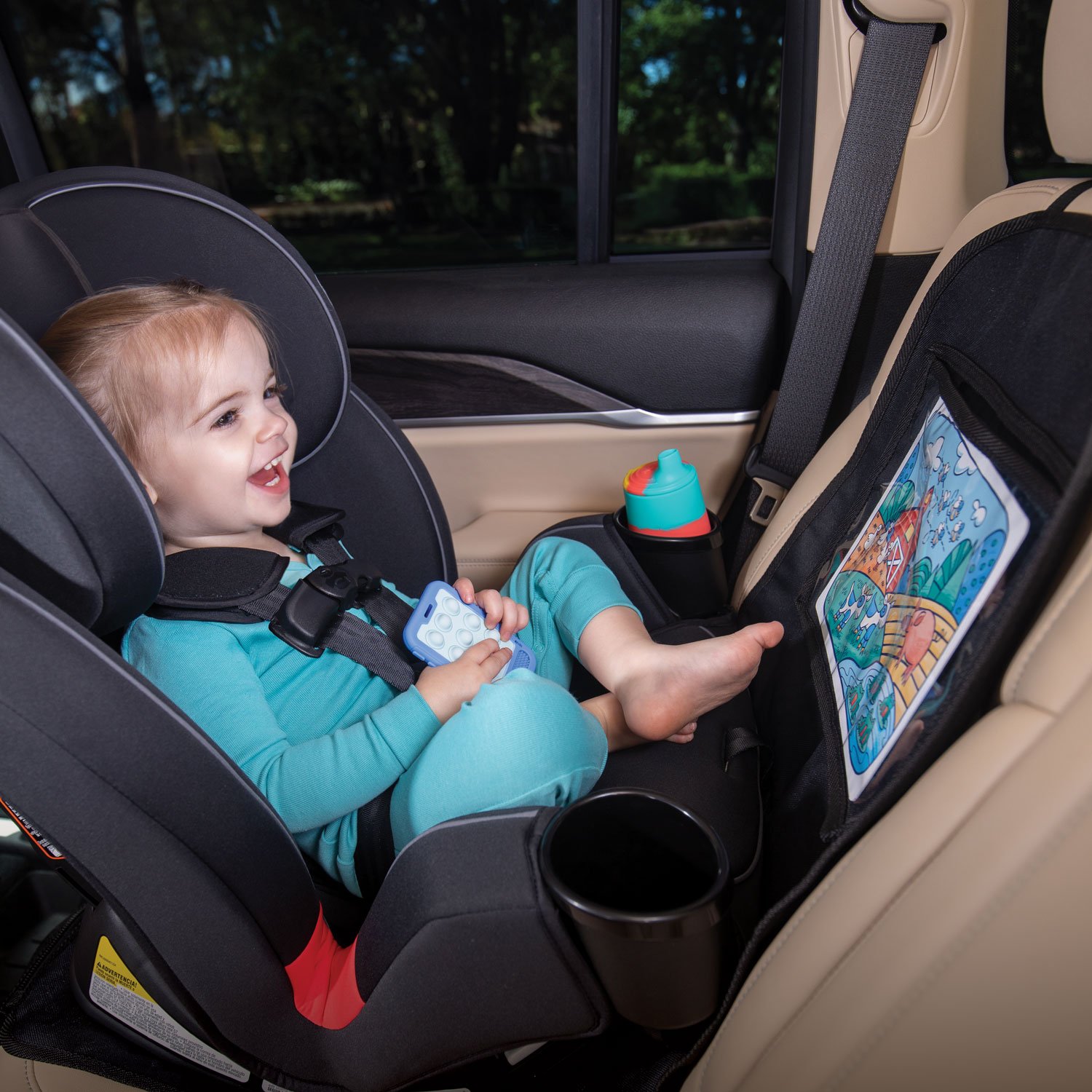Ensuring your child's safety while on the road starts with properly installing a rear-facing car seat. According to the National Highway Traffic Safety Administration (NHTSA), car crashes are a leading cause of injury among young children, and the correct installation of a car seat can significantly reduce the risk.
In collaboration with our partners at Safe in the Seat, we have created a step-by-step guide to help you install a rear-facing car seat with confidence. Together, we’re committed to empowering parents with the knowledge they need to keep their littlest passengers protected on every ride.
Don’t forget to check out our Nuby x Safe in the Seat collection of car accessories to make every drive smoother and safer, and follow @safeintheseat for more expert tips and safety insights.
We also encourage you to explore additional resources from trusted organizations like the NHTSA and American Academy of Pediatrics (AAP) to ensure maximum protection for your child.
Safe in the Seat Car Seat Protector
Why Rear-Facing Car Seats Are Essential
A rear-facing car seat provides the best protection for infants and toddlers in the event of a collision. The design allows the seat to absorb impact forces, supporting the child's head, neck, and spine more effectively than a forward-facing seat. The AAP recommends keeping children in a rear-facing seat for as long as possible – ideally until they reach the maximum head height, height, or weight limit of the seat.
How to Install a Rear-Facing Infant Car Seat
Step 1: Read the Car Seat and Vehicle Manuals
Before installation, carefully read both the car seat manufacturer’s manual and your vehicle’s manual. These provide crucial information on positioning and installation methods that vary by model.
Step 2: Choose the Right Spot in Your Vehicle
The safest place for a rear-facing car seat is in the back seat. Contact a CPST if you need help choosing the best spot to install your rear-facing car seat.
Step 3: Secure the Base Using the LATCH System or Seat Belt
Most modern vehicles have a LATCH system (Lower Anchors and Tethers for Children), which makes installation easier. If your car does not have LATCH anchors, use the seat belt method.
- Using LATCH: Attach the lower anchors from the car seat base to the vehicle’s anchor points. Tighten the straps until the base doesn’t move more than an inch side to side.*
- Using a Seat Belt: Thread the seat belt through the designated belt path on the car seat base. Buckle the belt and pull it tight to remove excess slack.*
*Reference your car seat and vehicle manuals for the preferred installation using the LATCH system or seat belt methods.
Step 4: Check the Recline Angle
A rear-facing car seat should be reclined at the correct angle to prevent the baby’s head from falling forward, which can obstruct breathing. Many car seats have built-in angle indicators or adjustable recline features to help achieve the proper positioning. If in doubt, reach out to a CPST for further assistance.
Step 5: Perform the Inch Test
After installation, grab the car seat at the belt path and try to move it side to side and front to back. If it moves more than an inch in any direction, the installation needs to be tightened.
Step 6: Secure Your Child Correctly
When placing your child in the seat:
- Adjust the rear-facing harness straps so they are snug and lie flat against your child’s shoulders, coming out of the seat at shoulder height or lower.
- The chest clip should be positioned at armpit level.
- Ensure no bulky clothing interferes with the harness, as this can create dangerous slack.
Now that you have your rear-facing car seat installed, check out the Nuby x Safe in the Seat car accessories that will improve you and your child’s ride, every time!
How to Correctly Install a Rear-Facing Car Seat? (FAQs)
Does a rear-facing car seat need to be anchored?
Rear-facing car seats do not use a top tether anchor, but they should always be secured using either the LATCH system or a properly tightened seat belt. Check your vehicle manual for specific recommendations.
How do I know if a car seat is installed correctly?
To ensure a correct installation:
- Test for tightness – the car seat should not move more than an inch in any direction.
- Use the built-in level indicators to confirm the correct recline angle.
- Double-check the harness fit; the straps should be snug with no slack.
- Reference professional resources like the NHTSA installation guide, or reach out to a Child Passenger Safety Technician (CPST).
What is the most common mistake people make when installing the car seat into the car?
One of the most common mistakes is loose installation. If the seat is not secured tightly enough, it can shift significantly in a crash, reducing its effectiveness. Other common mistakes include:
- Harness straps being too loose.
- Chest clip positioned too low.
- Using both the LATCH system and seat belt (you should only use one method, unless specified otherwise in the car seat manual).
New to using car seats? Check out our blog, Car Seat Safety Tips for New Parents for information and resources to make using a car seat the safest experience possible for you and your child.
Additional Tips for Car Seat Safety
- Check for recalls. Before using any car seat, verify that it has not been recalled.
- Use rear-facing for as long as possible. Follow your seat’s head height, weight, and height limits before switching to a forward-facing position.
- Avoid aftermarket accessories. Items not included with the car seat (such as extra padding or head supports) may interfere with its safety.
- Register your car seat. This ensures you receive important safety updates and recall notices.
- Have a professional check your installation. Many communities offer car seat inspection services by certified technicians. Find a nearby CPST to help guide you through installation.
For more details on keeping your child safe in the car, check out Nuby’s Safe in the Seat Collection.
Follow @safeintheseat on Instagram for practical, judgment-free safety tips that help you protect your precious cargo with confidence.

Shop Essential Car Seat Accessories
Enhance your child’s travel safety and comfort with high-quality car seat accessories from the Nuby x Safe in the Seat Collaboration.
By following these steps, you can ensure that your child's rear-facing car seat is installed properly, maximizing their safety on every ride.
Please remember to always reference your vehicle and car seat manuals for the preferred and safest installation recommendations, as each vehicle and car seat can have unique methods.



